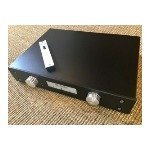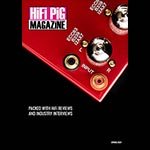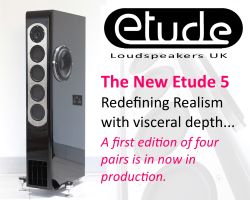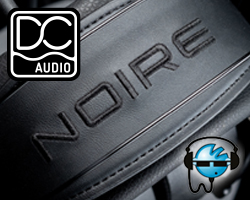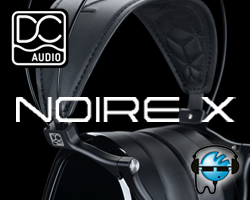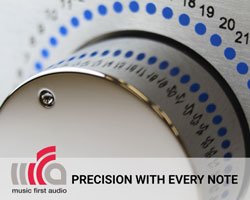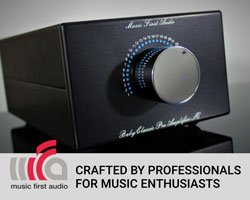STRUSS AUDIO ULTIMATE INTEGRATED AMPLIFIER REVIEW
Struss Audio is based in Warsaw, Poland, and has been in business for forty years. In this review, Janine Elliot checks out their Ultimate integrated amplifier costing £6500.

I had no idea that Struss Audio from Warsaw, Poland, had been in existence for some 40 years, a company specialising in the design and production of high-end amplifiers, a name that is well known in its home country. The ULTIMATE integrated amplifier is the ultimate of a present range of two integrated amps and comes in at 7430 Euros or USA dollars. The other integrated from Struss is the DM250, a 250Watt 4Ω (hence the name) class AB dual-mono affair. As I write, a third product is being finalised for release. All Struss amps are designed by Zdzislaw Hrynkiewicz-Struss who specialised in engineering and electronics at the Polish Academy of Sciences before starting to make amplifiers for himself. Like many audio designers, he simply found existing amplifiers couldn’t afford his music a satisfying listening experience. His past employment has included stints at Philips and Studer, and designing a pre-op circuit called “Harmonics and Phase Conversion System” or HPCS.
HPCS
HPCS is constructed on the based around a J-FET design, with the intention of generating even harmonics (just as valve amps do, which makes them sound so musical) whilst reversing the phase of the signal. HPCS, therefore, introduces some subtle modifications to the spectrum and dynamics of the acoustic signal, giving a unique but very pleasant and musical sound matching the needs “and characteristics of human hearing”. The Struss website affirms that the sound quality for the amplifier matches that of the very best out there and that “According to some of our most experienced and demanding listeners, the sound is even better!” Quite a tall statement and one that made me really excited to try out the product. The Ultimate also uses an advanced constant input impedance, high sensitivity circuit “that matches the line input specification”.
PASSIVE PREAMPLIFIER
Struss wants the minimal amount of electronics in the circuitry to maximize the authenticity of the music and to this end the Ultimate has a passive preamp stage. That means that RCA and CD/DAC/streamer signals go direct to the volume control and onto the power stage. The only pre-amplification will be in the phono-stages.
WELL ENDOWED
Certainly, the Ultimate is made to very high standards of electronics and design philosophy, with two separate toroidal transformers (each supplying 600VA) for the two independent amplifier circuits. For around £6500 you get a lot; this is a 250W 8Ω (400W 4Ω) power amp and passive preamp in one box. There are a considerable number of inputs including 5 RCA and 1 XLR line inputs, a pre-in to allow for an external pre-amplifier to be used, a pre-out to drive another power-amp and to top it all it comes complete with a 47KΩ MM and 100Ω MC phono-stage.
Alas, digital inputs are not supplied, but there is an additional analogue RCA input using higher grade WBT sockets labeled “CD/DAC”. The specifications for this socket are the same as the other 5 RCAs, namely 500mV/100kΩ. The main RCAs are quite close together meaning you might have problems if using really obese plugs.
All components such as capacitors and FETs are chosen with great care and electronic circuits assembled based on surface mount technology. The build quality is good and the amplifier with its distinctive front panel is available in black or silver. All switches are mechanical, with a basic “off/on” at the left and a 10-way switch on the right to change between the inputs, with blue LEDs to the left indicating what you have selected. The good thing about it being mechanical is that it obviously retains what you last used before you switched off, rather than you having to cycle through all the inputs each time you turn the amp on!
The potentiometer is an excellent Alps Blue Velvet with a red indicator (pity it doesn’t match the blue source LEDs). The unit comes supplied with a unique and circular (and very heavy) remote control which allows for volume up and down. This is a lovely-looking remote and continues the excellent quality of the build. Due to the mechanical nature of the amp, there is no remote sleep facility or function select, though a mute button would have been a useful feature to add. The loudspeaker connections are provided by WBT. Headphone lovers will also see that there is no headphone facility. Internally the amplifier is excellently constructed throughout; the separate toroidals for each channel sitting on the left and having the phono-stage circuitry placed well-away on the right is only common sense. The toroidals are close to the amplification ensuring short wiring.
Whilst there is a lot of detail spent on quality of build and technical standards (just read their website for a full list, such as the cleanliness of PCBs!) I hoped I would similarly find a lot of detail in the sound… and I wasn’t let down. Certainly, Struss spend considerable time listening before a product goes to sale, and my wait of nearly 6 months until one was available for me was well worth the delay and I then patiently spent 200 hours running it in before auditioning!
THE MUSIC
I am a lover of passive preamplification, using a TVC preamp regularly, so finding that the Ultimate was passive was to my liking, though I’m not generally in favour of direct-to-potentiometer designs. That said, the sound quality was very honest and didn’t take away or add anything to my sound sources, thus showing the Struss philosophy works so well. It allowed me several weeks of detailed and honest listening, my only real criticism was the amplifier wasn’t the very quietest I have reviewed when turned right up, though it shouldn’t cause an issue in most circumstances. The amplification is Class-AB and the amp will work in Class-A for most of your requirements.
Listening began with a reel-to-reel recording of the ELP concert broadcast on BBC Radio 2 many decades ago, a brilliantly engineered and performed event. I was surprised at how beefy the bass end was, though it was well controlled and agile. “Lucky Man” had great guitar and synth performances with very clear vocals, despite this limited quality FM broadcast. Next, I turned to Queen, and the excellent ‘Studio Collection’ comprising all of their albums on 18 coloured vinyl discs. “Spread your Wings” (‘News of the World’ coming on a green LP) had a clear bass and careful but sensitive acoustic guitar. The bass guitar in “Fight from the Inside” proved again how good that bass end was, and all tracks had good depth of field as well as left to right soundstage (particularly noticeable in “Get Down Make Love”), the HPCS almost adding a three-dimensional soundstage. Nothing stood out as being OTT, rather everything was just there in the right place and time, but perhaps just a little too cautious.
The Ultimate exuded neutrality of presentation, something very desirable to the audiophile who just wants to listen to the musicians rather than the HiFi.
Turning to Patricia Barber ‘Café Blue’ the atmosphere was very much like the album’s name; a casual social environment where you could almost smell the coffee and cigarette smoke in this very fluid and atmospheric live performance. Not that the presentation was hazy, just that the Ultimate orchestrated the mood magnificently, being slow and relaxing where necessary, such as in “Mourning Grace” or “Thrill is Gone”, and upbeat in tracks like “Yellow Car III”. Whilst the bass end was again particularly clear and quick, vocals too were accurate and precise. This integrated amp ‘integrated’ all the elements of the music and musicians with pizzazz. Its performance was more like a power amp with separate preamp, pulling out every element of the music, like a magician producing a rabbit from a hat. Perhaps “Houdini” could have been a better choice of name than “Ultimate”. Changing the mood to “Cjam” from Oscar Peterson’s ‘Night Train’ this starts and ends with a repeated piano ostinato containing G’s and C’s (hence the title) suggesting initially quite a boring number, but the music soon lets’ rip with excellent melodic patterns that are sprightly and have a thick timbre ably performed both by the jazz trio and the Ultimate. Only in “Bags’ Groove” were the cymbals just a little too tizzy for my liking.
Lemba was an Estonian composer from the end of the 19th century whose first Piano concerto is his best work. He composed no less than four operas, three cantatas, and five piano concertos. His Symphony in C# minor played through the Struss gave a strong grasp of the instrumentation, particularly the strings. The performance was accurately addictive. The mid frequencies were warm and enlightening, much as one would expect from a valve amp. Tartini’s slow movement from his violin concerto in A (D96) from Chasing the Dragon was again warm and satisfying but not quite as delicious as I have heard on several other amps at the same price. Everything was all there – well-timed and detailed – just that it wasn’t as scrumptious as it could have been. There was more emphasis on detail than musicality, though it was still good. Perhaps an ECC83 in the preamp would have helped!
Whether I was using my AT33sa MC cartridge on my Pre-Audio turntable or the Shure V15iv MM cartridge on my aged Michell Hydraulic Reference the phono-stage was really good unless turned up very loud where it was a little noisy. Indeed, it would work well as the basis for a separate phono-stage unit in its own right. Here the RIAA curve was excellently flat with its circuitry being based on a J-FET design. ‘Bitches Brew’ from Miles Davis had an excellent bass end from the Struss plus clean trumpet solos. The electric piano from Chick Corea in “Miles Runs the Voodoo Down” was compelling and detailed. The repeated and concentrated rhythmic phrases had lots going on but at no time did the sound get out of control. The semitone and even clever quarter-tone notes at the very end were as clear as I have ever heard, even on separate phono-stages. Music from this and other jazz albums I played was energetic and dynamic. Turning to Jean Michel Jarre’s ‘The Concerts in China’ those mid-frequencies were further shown to be a forté in the design, plus of course that bass end was clear and precise. Jarre loves to add electroacoustic elements to his music, and this double album is full of them. Track 2 (side 3) starts with a game of table tennis and a train passing in time with the rhythm and making way for an Eno-esque relaxed section with an additional electroacoustic rhythm. The Ultimate handled it all with ease; this amp is fast. Bell noises were energetic and tested my supertweeters. As a contrast in musical style, Elgar’s ‘Introduction and Allegro for Strings’ gave me a good chance to listen again to the excellent mid frequencies. However, I did find they sounded rather digital; everything is there but not quite as full and musical as I would like. That said, however, in Beethoven’s Piano Concerto No1 op15 (Claudio Arrau) the strings and piano were more controlled and realistic and the fast piano runs were more controlled and energetic. Whilst the amplifier, in general, is fast I did find the phono-stage the more relaxed, though its presentation was well worth inclusion in the Ultimate.
CONCLUSION
The Ultimate was a very interesting amplifier to review; bags of facilities and inputs and an overall sound that is highly detailed. It takes nothing away from your sound sources, which is a good thing, having an unforced musicality that only at times sounded a tad clinical, something that improved significantly as I ran the amp in – so don’t expect miracles until around 200 hours of use. The looks are good, and I loved the remote control! This amplifier is based around the HPCS design and as such is designed to match the ears of the listener, and my ears enjoyed the results.
AT A GLANCE
Build Quality:
Excellent build and use of components
Sound Quality:
Excellent bass end and good speed. Very neutral sound.
Value for Money:
Hits the right price band for an integrated with built-in phono-stage.
We Loved:
The HPCS design
Very neutral sound
A detailed and full bass
Excellent mid-range, particularly vocals
A large number of inputs and outputs plus phono-stage
The remote control
We didn’t love so much:
I felt at times the sound could come across as a little too detailed and critical.
Elevator Pitch Review: A very natural and detailed sounding amplifier that excels particularly in the mid-range. It comes with a very usable phono-stage and a good number of inputs. The remote is a lovely thing to use.
Price: £6500, €7430, $7430

Janine Elliot
Review Equipment:
Pre-Audio (turntable)/AT33sa (MC cartridge), Michell/Shure V15iv (MM cartridge) Krell KPS20i (CD), Teac A-3300 7ips/ ¼ track and Ferrograph Logic7 15ips/½ track (Reel to reel), Graham Audio LS5/9 (speakers),Townshend supertweeters and Wilson Benesch subwoofer. Ecosse, Tellurium Q, and Townshend (cables).
Specifications:
| Power: | 2 x 250 W/8 Ω (CLASS AB)
2 x 400 W/4 Ω (CLASS AB) |
| Minimum impedance load: | 1 Ohm (instantaneous) |
| Power consumption: | STATIC 40 VA
PEAK 1200 VA |
| Output impedance: | 0.20 Ω |
| Distortion – THD: | 0.05% at 1 W / 8 Ω
0.015% at 245 W / 8 Ω |
| Frequency response: | 3 Hz – 100 kHz – 3 dB / 1 W / 8Ω |
| Non-linearities in the frequency band: | 10 – 30,000 Hz: ± 0.01 dB |
| Slew rate: | 200 V/μs |
| Dynamics: | 135 dB |
| Signal – noise ratio: | 130 dB (IHF – A) |
| Inputs: | 5 x universal – RCA XLR Amphenol separated CD / DAC – RCA WBT phono MM – RCA input power amplifiers – RCA |
| Output | Passive preamplifier – RCA |
| Sensitivity of inputs: | 500 mV – universal inputs and dedicated CD / DAC 500 mV – XLR input 3 mV – MM input 0,2 mV – MC input 0.500 V – power amplifiers |
| Impedance inputs: | 100 kΩ; universal inputs and CD / DAC 22 kΩ XLR 47 kΩ MM 100 Ω MC 47 kΩ power amplifiers |
| Potentiometer (volume): | the highest precision model the Alps – Blue Velvet |
| Transformers: | 2 x toroidal, 600 VA each |
| Capacitors filtering the supply voltage: | 8 x 12 000 uF – Nippon Chemi-Con |
| Advanced protection system: | against short-circuiting of the loudspeakers and a stream of DC voltageat the output |
| Remote control: | RC5 code (volume) |
| The DM 250 amplifier fulfills all requirements and standards valid in the EU | |
| Net weight: | 19 kg |











































